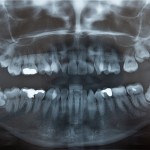
The merits of the lingual split techniques verses the surgical bur for the extraction of impacted mandibular third molars have been debated for many years. The aim of this review was to compare the post-operative outcomes of the lingual split and the surgical bur techniques.
The authors searched the PubMed, Ovid MEDLINE, and Cochrane CENTRAL and a number of journals (Journal of Oral and Maxillofacial Surgery, International Journal of Oral and Maxillofacial Surgery, Journal of Oral Surgery, and the British Journal of Oral and Maxillofacial Surgery) for prospective randomized controlled clinical trials (RCTs).
Five studies were identified of which 4 are used in the analysis. The quality of the RCTs found was poor with sample sizes being small. Key outcomes pain, swelling, trismus, bleeding, delayed healing/infection, and disturbance to lingual and inferior alveolar nerve function were summarised qualitatively.
The authors concluded
The limited analysis allowed by the number and size of the studies leads to tentative conclusions of no difference between postoperative pain and swelling, and some evidence of less trismus for the lingual split technique. There is some weak evidence of a similar incidence of neurological sequelae between the 2 techniques, but this is not a strong conclusion owing to the small size of the included studies. There are inadequate data regarding bleeding and delayed healing/infection for analysis.
Steel B. Lingual split versus surgical bur technique in the extraction of impacted mandibular third molars: a systematic review. Oral Surg Oral Med Oral Pathol Oral Radiol Endod. 2012 Jan 25. [Epub ahead of print] PubMed PMID: 22285141.
Comment
The surgical removal of third molars is one of the most commonly performed surgical procedures so that it is somewhat surprising that there have been no high quality studies performed to answer the key question posed by this review on whether the lingual split or surgical bur approach has the best post-operative outcome.
